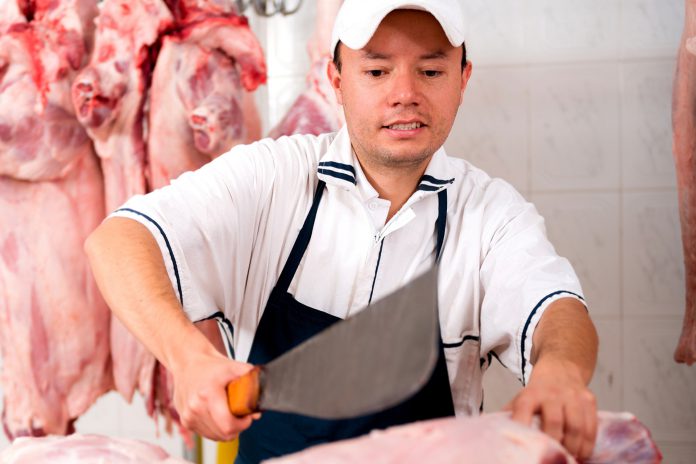
Consumer demand for local food, including local meat, poultry and fish, has risen in recent years.
With the cost of beef, lamb, pork, veal and chicken increasing in price on a daily basis, it is critical that the Retail Butcher and Smallgoods Processor utilises the entire animal carcass. The whole animal offers an opportunity to work with foundational cooking components that are otherwise unavailable or more expensive when purchasing stand-alone.
As meat is often the most expensive ingredient your customer will place on their shopping list, they are moving away from the large format single-portion cuts, like thick-cut chops and steaks. Instead, they are looking for alternatives that allow them to share meat amongst multiple people, or purchase cuts that allow for smaller individual portions. Modern day chefs are now using cuts of meats that would normally be discarded or rarely asked for, such as beef and pork cheeks, oxtail and even offal out of the different types of animals, and charging a premium price for their dishes.
As a butcher, engaging with your customer or understanding your customer’s business by asking about their process on different cuts of meat will give you the insight as to what product mixes would suit or enhance their needs. This is turn would help increase their profitability and add value to your service as a trusted advisor.
Many new age butcher shops are making a massive come back in the local shopping strip. When their customer comes to the local butcher shop with purchasing in mind, they are expecting something better than the large generic supermarkets, and what better opportunity than to show that you are truly gourmet.
A butcher has a tub of beef trim to turn into mince and possibly ends up not selling all of it in one day – remembering that preservatives cannot be added to fresh mince. Alternatively, the butcher could value-add half of this trim by turning it into gourmet burgers or meatloaf using Lesnie’s premixes, or a quality smallgoods product like a cabana, processed salami or flavour-filled sausages using Gourmet Sausage Meal. By doing this a butcher would be able to charge a better price per kilo than for plain mince.
Too often it is easier to take the quickest simplest fix, which may not be the most profitable way to utilise the less popular cuts of meats. The retail butcher who works more effectively with their customers will build loyalty and ultimately increase demand for their services. It is important for the butcher to demonstrate a commitment to providing, maintaining, and improving quality products and service.
Meat retailing has evolved, and today’s success stories are not from products like the traditional beef mince, Aussie thin sausages and rump steaks. Today, butcher shop success comes only to those who diversify.
Lesnie’s extensive range of ingredients are essential for butchers when producing sausages, burgers, smallgoods and chicken pieces. Our quality-add glazes and marinades, seasonings and premixes add excellent value to your range of meats whilst the herbs, spices, coatings and crumbs offer something a little different.
Diversifying doesn’t have to cost the butcher a lot of money, and it doesn’t have to be difficult, but it does have to offer your customer more choice within the display cabinet. It definitely requires thinking ‘outside the box’ and knowing what your customer base wants.
Ross Hodgson is Australia Northern Regional / New Zealand Business Development Manager at Bunzl Australia and New Zealand. Ross has lived and worked in Australia and France practicing his ‘food’ trade.










